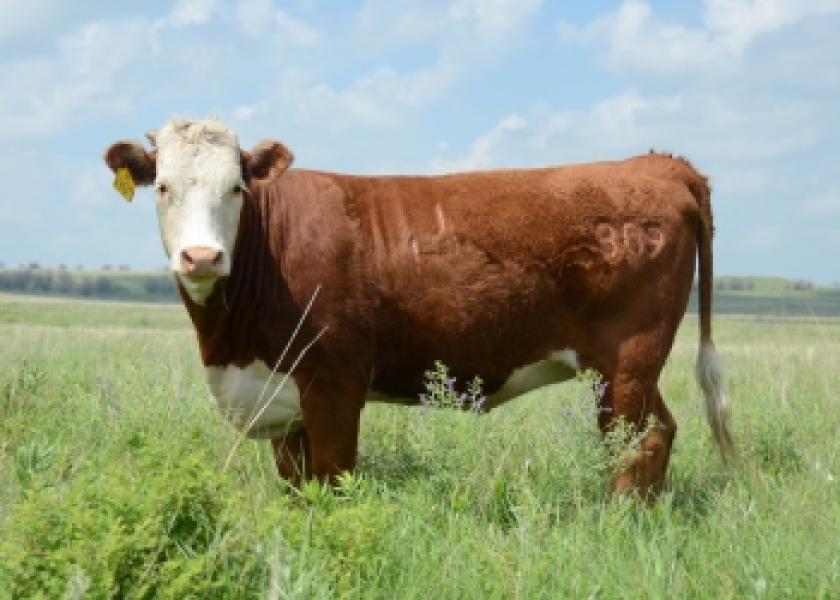Consider Early Grazing Alternatives

Grazing native range grasses too early can reduce forage production.
Ranchers should not rush to turn livestock out on pasture in the spring, North Dakota State University livestock and rangeland experts say.
“With the dry conditions this spring, forage production will be lower than average,” rangeland management specialist Kevin Sedivec cautions. “Early spring grazing, especially under dry conditions, can be costly in terms of total forage production during the entire grazing season. Grazing before native grass plants reach the third-leaf stage causes a reduction in herbage production, which can reduce the stocking rate and animal performance.”
In North Dakota, early cool-season native range grasses typically reach the third-leaf stage in late May or early June, which is the recommended time to begin grazing native range.
Many livestock operators will be looking for strategies to provide feed for their animals during May to replace harvested feeds, especially if moisture conditions remain low.
One alternative is grazing tame grass pastures in May. This is the best-case scenario because it eliminates damage to native rangeland and still allows producers to turn cattle out on pasture by early May. Tame grass pastures reach grazing readiness two to four weeks earlier than native range, permitting grazing in May.
Livestock environmental stewardship specialist Miranda Meehan recommends that if livestock producers do not have tame grass, they should rent tame grass pasture for May or graze Conservation Reserve Program (CPR) lands that no longer are under contract in May and June.
Crested wheatgrass is the only tame grass ready to be grazed by early May. Smooth bromegrass and meadow bromegrass typically are grazing-ready by mid-May, while most CRP lands include grasses such as intermediate and pubescent wheatgrass that are ready for grazing by late May. Although these grasses may reach the third-leaf stage in late April and early May and are physiologically capable of handling grazing pressure, the herbage quantity is too low for high stocking rates.
“The management decision will be whether to start grazing crested wheatgrass early with moderate stocking rates for the entire spring period or wait until the first week of May, when the growth can keep up with the higher customary stocking rate,” Sedivec says.
Another alternative is to continue drylot feeding in May. Feeding hay in drylot situations would be the lowest cost scenario, compared with grazing native range in May before grasses reach grazing readiness. Grazing before sufficient grass growth has occurred can result in a loss of 45 to 60 percent of the potential forage production and a loss in meat production.
“The ecological and economic impacts of grazing native rangeland prior to grazing readiness may take years to recovery from if livestock are allowed to overgraze,” Meehan says.
However, ranchers who have exhausted feed supplies and cannot purchase feed or do not have tame grass pastures established will need to put their livestock on native pasture. Here are factors to consider when selecting native pasture for early grazing:
- Plant species composition - Select pastures that are heavily invaded by non-native cool-season grass such as smooth brome and Kentucky bluegrass rather than pastures dominated by native species. These non-native cool-season grasses start growing earlier in the season than native species and typical are ready to be grazed by mid-May. If pastures are not heavily invaded by non-native species, select pastures dominated by native cool-season species that reach the three-leaf stage in late May/early June instead of those dominated by native warm-season species that do not reach the three-leaf stage until late June/early July.
- Ability of the plant community to recover from disturbance - A number of factors influence the community’s ability to recover from disturbance. Plant communities associated with soils that have a higher water-holding capacity and are in areas that receive additional water are better able to withstand drought conditions than communities on droughty soils. Similarly, native plant communities that contain a larger variety of species are better able to respond to disturbance.
- Grazing management history of native pastures - Give priority to pastures that were not grazed or only lightly grazed the previous growing season. This technique has flaws because livestock will target lush new growth; however, they also will consume the old growth from the previous year. The new growth will be high in crude protein (18 to 23 percent) and water content (75 to 80 percent), and low in fiber content (20 to 30 percent). If old growth is not available to provide a dry filler and fiber, livestock may not consume adequate dry matter. These early grazed pastures will need to be rested throughout the summer months; however, if grazing is not severe, the pastures could have some light use again in the fall.
Producers who graze native pastures early in the grazing season need to take precautions to minimize damage resulting from overgrazing.
For more information on early grazing, contact your local county Extension office or visit http://tinyurl.com/grassmgmt for NDSU Extension’s “Ranchers Guide to Grassland Management IV.”
Source: North Dakota State University Extension Service







